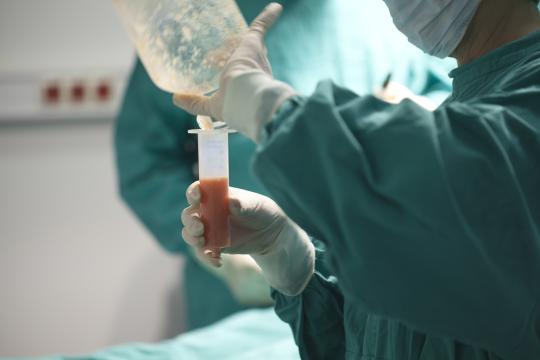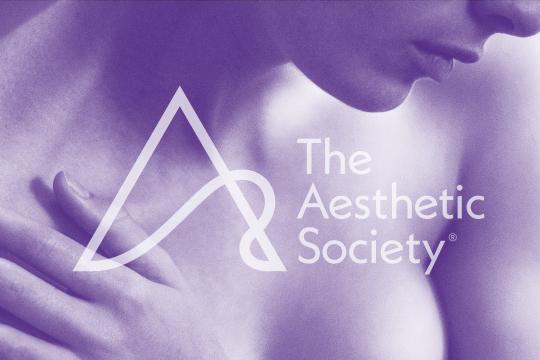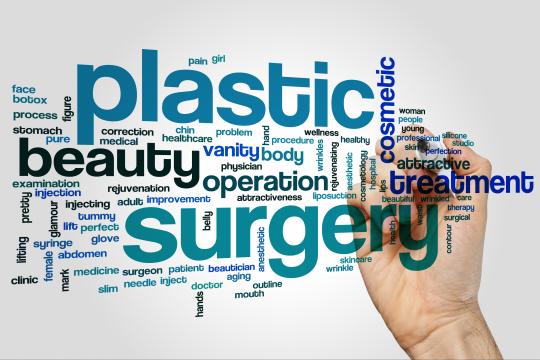
You’ve done your research, chosen the right board-certified plastic surgeon and gotten through your surgery without a hitch. Now you can’t wait to jump back into your daily routine, and maybe show off your fabulous results, right? Well, cool your jets, cowboy. The truth is: you may not be ready.
No amount of researchin’ or doctor-pickin’ will keep you from the necessity of adhering to a strict recovery period after a surgical procedure. And by ‘recovery’ we mean the very specific set of guidelines and instructions that your plastic surgeon will dole out to ensure the safest healing and successful result. In order to hammer this home, we’ve collectively wrangled up a handful of the top surgical procedures performed in 2018 for a brief overview of what a recovery period for each procedure might looks like. And for good measure, we’re pepperin’ in some Wild West references. Just ‘cause.
According to the most recent statistics from the The Aesthetic Society, the top five surgical procedures performed in the U.S. were breast lifts, augmentations (women) and reductions (men), eyelid surgery (blepharoplasty), liposuction, and tummy tucks. Add them up and you’re looking at a lot of collective recovery time.
Breast surgeries (augmentation/ lift/ reduction): Without question, breast surgeries—including breast augmentations and lifts and breast reductions—top the list of most popular plastic surgery procedures in the U.S. In 2018 alone, surgeons completed 329,914 breast augmentations and 158,964 breast lifts for women, and 24,672 breast reductions to treat gynecomastia for men. What was that we said about a lot of collective recovery time. Yeah. So what does that mean?
Adhering strictly to your doctor recommended recovery period from breast surgery will mean that you will lie low for anywhere between 3-7 days, walking occasionally to prevent blood clots but generally whiling the day away wearing whatever compression garments, support bra or surgical dressings your surgeon recommends, dealing with any pain, taking any prescribed antibiotics, caring for your incision and any drains that your surgeon kept in place, and being on the lookout for any abnormal swelling, redness and extreme or long-lasting pain (at which point you will contact your surgeon.) You know what you won’t be doing? Anything that strains the breast area. No reaching, stretching, lifting, pulling or pushing. Anything that’s uncomfortable or painful to the pectoral region of your body should be firmly placed on the ‘don’t do that’ list. You may likely be able to return to work after this period of time, but will be advised to hold off on exercise for at least 2 -3 weeks post-surgery. The okay to gradually jump back into your cardio and weight training workouts will come from your surgeon.
Liposuction: Another popular surgical procedure for both men (32,241) and women (257,020) in 2018 was liposuction The recovery period for liposuction will vary somewhere between 3-10 days, depending on the type of liposuction performed, your ability to heal, your pain tolerance and your surgeon’s specific recommendations. Recovery will look something like this: You’ll get up and walk as soon as possible after your surgery to avoid blood clots. You’re doctor will advise you to wear a compression garment (and you’ll do that), they might prescribe an antibiotic (which you will take), and they may recommend elevating the effected area (and elevate you will). You won’t smoke (‘cause you gave that up already, right?), you won’t drink alcohol (cause you may be taking pain medication), and you’ll avoid any lifting or straining. Essentially you’ll be a sloth to your doctors sloth-keeper and you’ll follow all of his/her instructions as if they were law. That being said, some people may be able to return to work (w/ their trusty compression garment) within a few days, others will need more time, and at that 10 day mark, your doctor will let you know if you’re ready to incorporate light exercise. The key word is “light”. Allowing your body to fully recover for 4-6 weeks before your triumphant return to any intense workout is the best way to achieving a successful result.
Tummy Tuck (abdominoplasty): A grand total of 152,446 women and 5,046 men chose to undergo a tummy tuck last year, which places this procedure firmly in our top 5 list of the most popular procedures performed in 2018. And while all plastic surgery recoveries will vary from patient to patient, let’s peek at what a typical tummy tuck recovery might look like, shall we? Your surgeon will probably advise between 3-7 days of rest and relaxation post-surgery depending on the extent of your surgery and your individual tolerances. During this period of time it’s typically advisable to have someone around to help you. Your main job will be caring for your incisions and any drains and being on high alert for any signs of complications or infections. Walking around (with assistance if you need it) will help alleviate any concern of swelling and blood clots, but that’s likely to be the extent of your exercise for between 3 - 6 weeks. Most patients will be able to return to work after about 2 to 3 weeks, but should avoid heavy lifting for about 4 - 6 weeks. If you have tiny people dependent on you (aka. small children), you’ll need to place someone else in charge of their care for at least two weeks. Your doctor will be able to better advise you when you’re ready to hit the gym again, but be prepared to lay off any heavy aerobic activity for as long as it takes you to fully recovered.
Eyelid surgery (blepharoplasty): Wrapping up our popularity contest/ recovery expectations is eyelid surgery, otherwise known as blepharoplasty. In 2018, nearly 17,593 men and 97,916 women chosen to have this procedure, and while this procedure isn’t as invasive as some of the others on our list, blepharoplasty is an still an invasive procedure that has its own set of aftercare instructions. A typical recovery will require 10 - 14 days of rest, relaxation, applying cold compresses, elevating your head to alleviate swelling, applying any prescribed ointment (so much ointment), and napping, napping, napping. Your doctor and your own comfort level will help you gauge when you can return to work and when it’s okay to apply cosmetics to the area. At 2-3 weeks you’ll likely be able to start incorporating light exercise, but keep in mind that activities like exercise, bending, and lifting are no-no’s—anything that increases blood flow to the eyes and should be avoided until your surgeon gives you the okay.
Whether you’re recovering from a cold or from a major surgery, it’s always tempting to get back to the gym, work and life post haste without giving your body the time it needs to heal—don’t do that. The decision to return to an active, normal lifestyle is reliant on a number of variables — what your job entails, your exercise routine, the procedure you underwent, how your body is responding to the surgery itself. It’s important to remember that recovery varies a lot from patient to patient, and while this article is a handy guideline, your plastic surgeon’s instructions will be your bible through the recovery process and you will follow them all without fail.
Self-care, people. It’s a real thing. They don’t call the “healing process” a “process” for nothing, folks.








